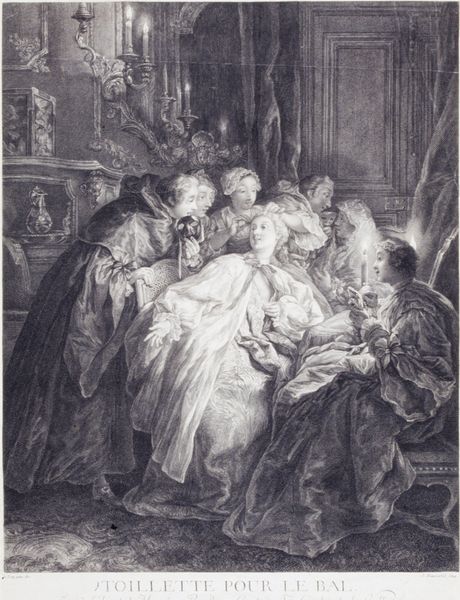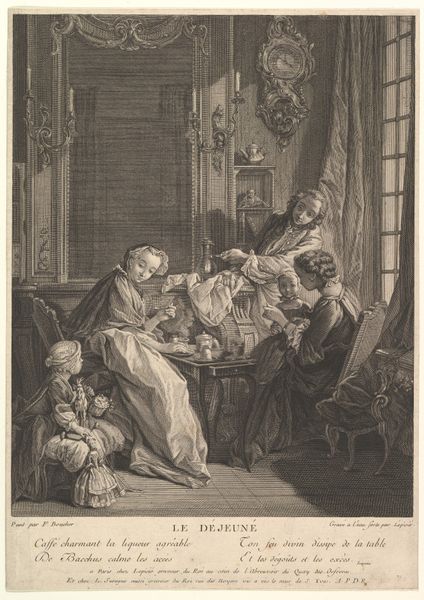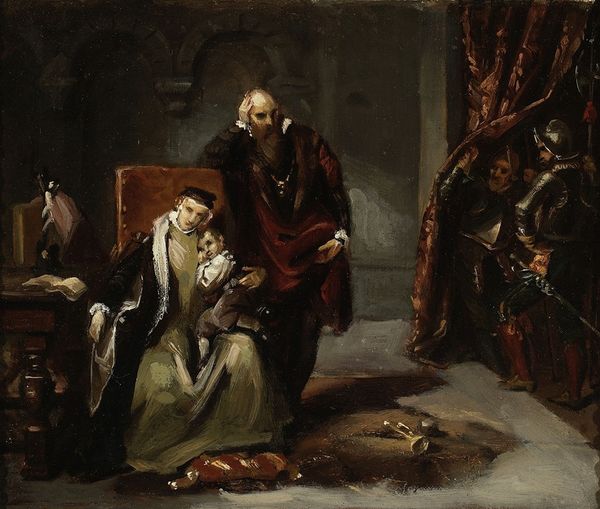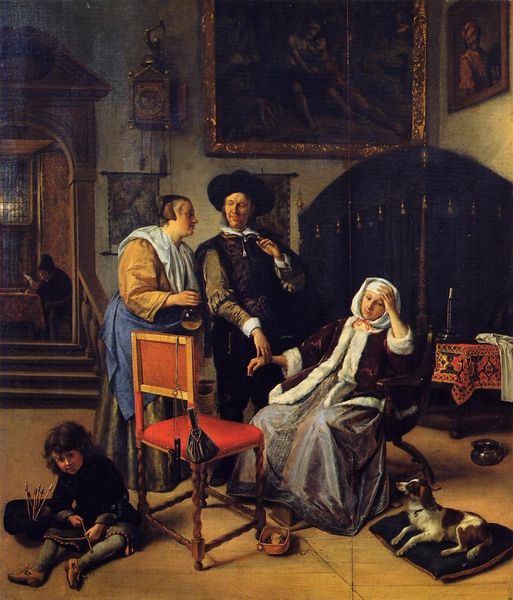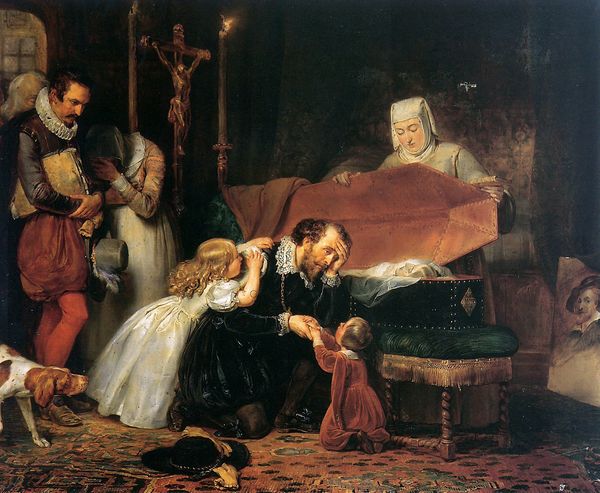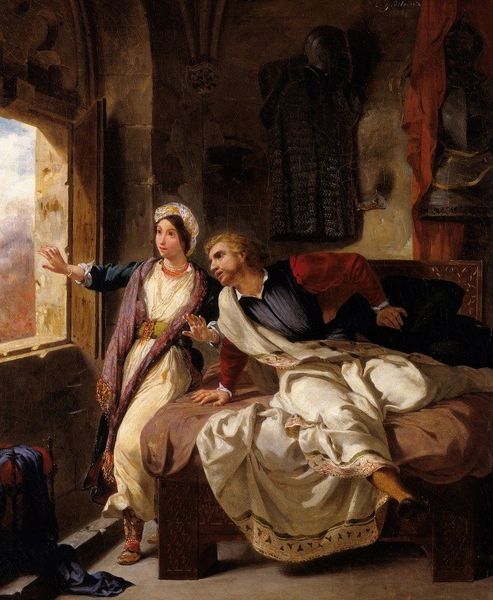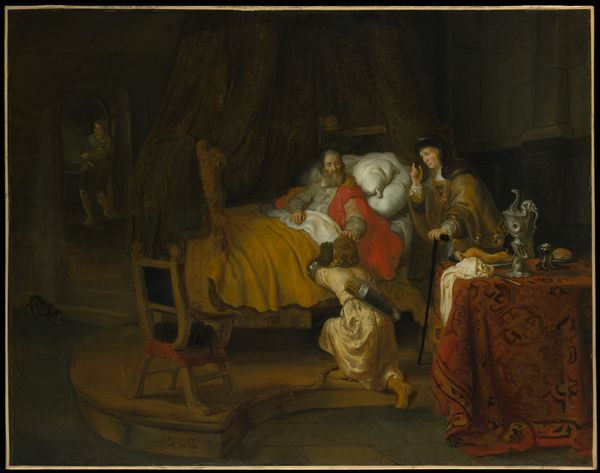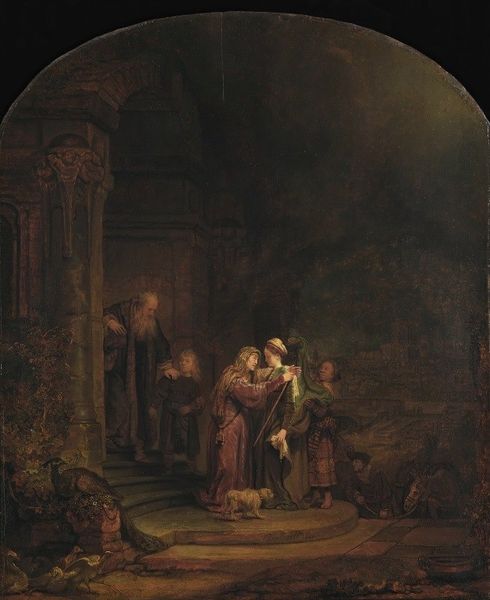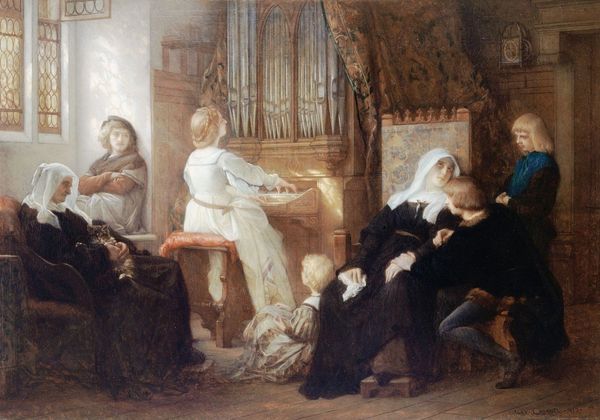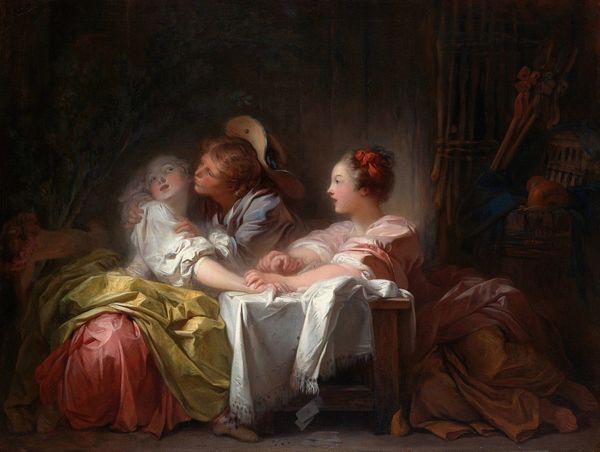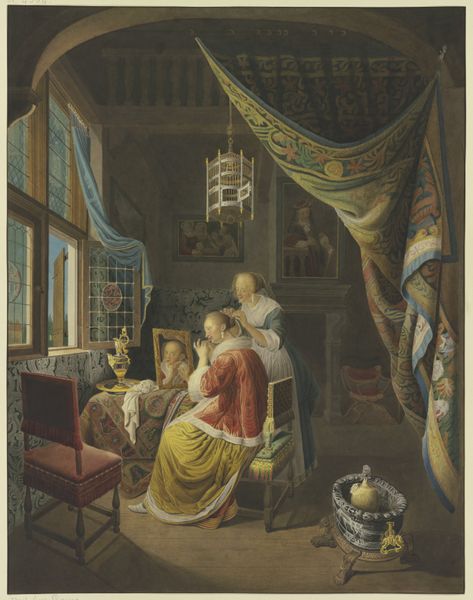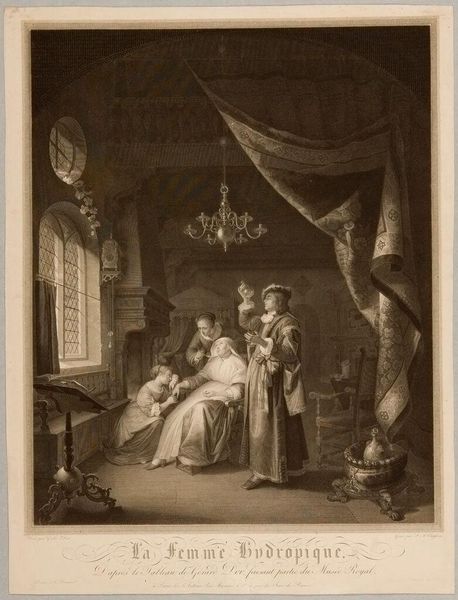
painting, oil-paint
#
portrait
#
gouache
#
baroque
#
dutch-golden-age
#
painting
#
oil-paint
#
painted
#
oil painting
#
genre-painting
#
history-painting
#
realism
Dimensions: 86 x 67.8 cm
Copyright: Public domain
Curator: Standing here, I feel the weight of Gerrit Dou’s “The Dropsical Woman” from 1663. What leaps out at you first? Editor: The pallor, absolutely. That ashen, almost ghostly light on her face…it's arresting and a little chilling, isn't it? Like she’s already halfway gone. Curator: It's potent, isn’t it? But Dou doesn’t shy away from these tougher subjects. Look how he's carefully positioned this scene – this domestic interior transformed into a theater of medicine. You’ve got the doctor with his urine flask – diagnosing the ailment – and the somber faces gathered around. It’s a whole world, condensed. Editor: A rather bleak world! I suppose the setting offers some…elegance? That drapery is fabulous. But even the elegance feels mournful. Tell me, was painting illness a common theme back then, or was Dou particularly drawn to it? Curator: It was certainly present. Art acted as medical record, sometimes…but here, Dou engages with broader themes – mortality, the limitations of medicine. He makes you an uneasy voyeur in a very private moment of suffering, capturing not just physical illness, but the emotional toll. Also, his precise realism, and meticulous attention to detail, especially his rendering of light… it elevates what could easily be a genre painting. Editor: True, there’s something haunting about the stillness, too. The details invite close looking: the gleam on the flask, the woven texture of the blanket and drapery, or the dark eyes of the presumed relatives… Makes me consider that medical knowledge was still relatively primitive and how scary that would have been. I wonder if she felt the end drawing near…or was in denial. Curator: Dou has an amazing ability to provoke reflection, wouldn’t you say? He captures humanity grappling with its fragility. Makes you think about how medicine itself has evolved, but fundamental human experiences – illness, grief, fear of death – persist. Editor: It’s certainly powerful. Though I still find myself strangely drawn to that chandelier, which seems oddly cheerful. As though someone forgot to extinguish the light and accept fate! Curator: Perhaps, it offers a quiet flicker of hope against the pervasive gloom. That’s the complexity I always appreciate in art, this layering of perspective, so much is unsaid. Editor: Indeed, a single snapshot into 17th-century existence raises a host of enduring existential questions. And now I want to find out if there were ways that dropsy was actually treated back then… Curator: The painting does send you down those kinds of thought tunnels…I suppose, there were primitive remedies.
Comments
No comments
Be the first to comment and join the conversation on the ultimate creative platform.
